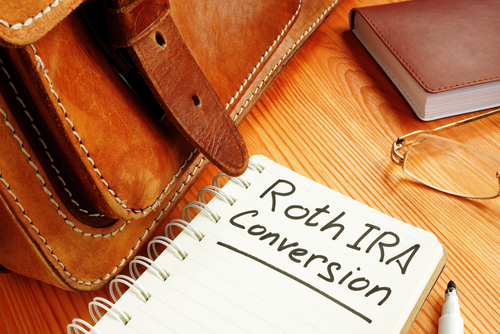The Roth IRA was designed to provide tax benefits, but it’s often viewed as primarily an investment tool for younger investors. This is because there are income limits to contributions, and it’s generally assumed that income – and hence taxes – will be lower during the earlier stages of a career. It can also be an effective tool for investors close to and in retirement. That’s where the Roth IRA conversion comes in.
Are your Traditional IRAs a ticking Time Bomb?
I don’t have a crystal ball, but I think taxes are only going to go higher. After the massive government spending throughout the pandemic, the US government is now in more than $28 trillion of debt. To get paid back, we must assume that the government will increase taxes. And what we do know is that the tax cuts are expiring in 2025. That means all the income you take from your IRAs in retirement will be taxable at some unknown level. This can present a host of challenges for individuals trying to manage their income and taxes in retirement. Since we are at low tax rates now, it makes a lot of sense to get the tax out of the way now by converting IRAs to Roth IRAs. This way, your investments can grow tax-free and be taken out tax-free in retirement.
Converting Existing Assets from Traditional Retirement Accounts
The Roth IRA allows investments to grow tax-free, distributions are not taxed, and there are no required minimum distributions. 1 Combined, these benefits can be part of a successful retirement plan, one that ensures you can invest for the growth your long-term goals need while still managing your income in a way that creates tax efficiency.
Traditional IRAs and 401(k) plans require minimum distributions (RMDs) to be taken, starting at age 72.2 The amounts of these change from year to year based on the value of the plan, and they are taxed as income. This can have knock-on effects and potentially increase taxation on other income, such as social security if your RMDs are high enough that they push your total income over the income limits on how much of social security benefits is untaxable.4
Besides the tax implications, your investment strategies must be managed around the need to generate cash for distributions, which can force you to liquidate at points where you might prefer to stay invested. This can impact your long-term returns.
By converting these accounts to Roth IRAs, you eliminate RMDs. This may allow for more effective tax management strategies. It also means that you can keep more assets in longer-term illiquid or growth strategies, as there isn’t a need to plan for distributions beyond what you need for income.
It can also make estate planning more straightforward, as the SECURE Act, signed in 2019, ending the so-called “stretch IRA” which allowed IRA assets to be passed to heirs without requiring the inheritor to pay RMDs. All assets in inherited traditional IRAs must now be distributed within ten years.
The When and the How to Pay for It Matters
To avoid a big jump in income in any one year, which can impact social security taxes and also result in you having to pay a Medicare surtax, it may make more sense to set a plan to complete the rollover over several years so that you can manage the impact to income and taxes.
Since, as mentioned above, gains in a Roth IRA do not carry a tax burden, returns on a Roth IRA may be higher. Funding a conversion from taxable assets, such as those in a brokerage account can increase returns over time. The returns from the brokerage account are reduced by the tax paid, while the returns in the Roth IRA earn a pre-tax rate. If you haven’t reached age 59 ½, it’s essential to use taxable assets as withdrawing from the traditional IRA or 401(k) will trigger a 10% tax penalty.3
The Bottom Line
Even if you did not set up a Roth IRA at an earlier stage of your career, it can still be an effective tool in retirement. It just requires some careful planning to manage the conversion from a traditional IRA or 401(k), to be sure it works for your situation. And with taxes likely going higher, it’s a great time to take advantage of today’s low tax rates.
- Internal Revenue Service publication 590 A, Contributions to Individual Retirement Arrangements (IRAs).
- Internal Revenue Service. Retirement Plan and IRA Required Minimum Distributions FAQs.
- Social Security Administration. Income Taxes and Your Social Security Benefit.
- Internal Revenue Service publication 590 A, Contributions to Individual Retirement Arrangements (IRAs).
This work is powered by Seven Group under the Terms of Service and may be a derivative of the original. More information can be found here.


